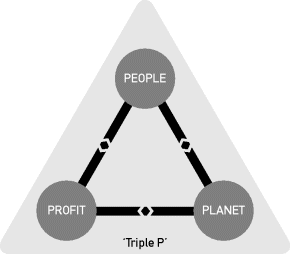1.5 Design for Sustainability (DfS)
The main goal of design for sustainability is sustainable development. The concept of sustainable development was introduced and promoted by the report “Our Common Future” as a common aim for the whole world (Brundtland, 1987). The Brundtland definition of sustainable development describes it as “Development which meets the needs of a current generation without compromising the ability of future generations to meet their needs.”
Even though sustainability is widely accepted as a general goal, nowadays it is interpreted in various ways that can be distinguished by their relative emphasis on economic, social, and ecological aspects.
In order to understand and manage the sustainability concept more transparently, Elkington (1998) developed the framework of the “triple bottom line” comprising the three sustainability components of economic prosperity, environmental quality, and social justice, which further were developed into economy, environment, and social equity. At present, these three key elements of sustainability are frequently referred to as the triple P: people, planet, and profit (see Figure 1.5.1).
Figure 1.5.1 “Triple P,” the three key elements of sustainable development

Initially, sustainability in Europe largely was an environmental (planet) issue. The initial impetus was directed at what is called design for the environment or ecodesign ...
Get The Power of Design: Product Innovation in Sustainable Energy Technologies now with the O’Reilly learning platform.
O’Reilly members experience books, live events, courses curated by job role, and more from O’Reilly and nearly 200 top publishers.

